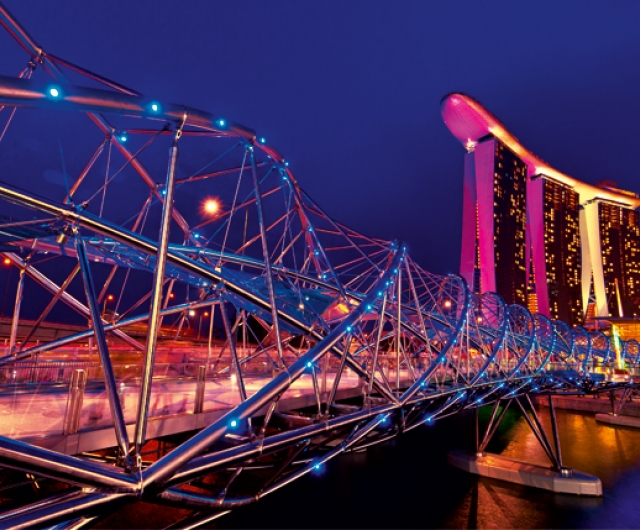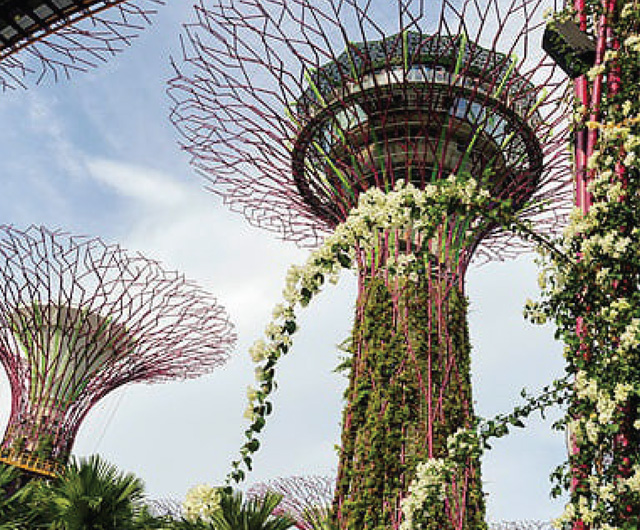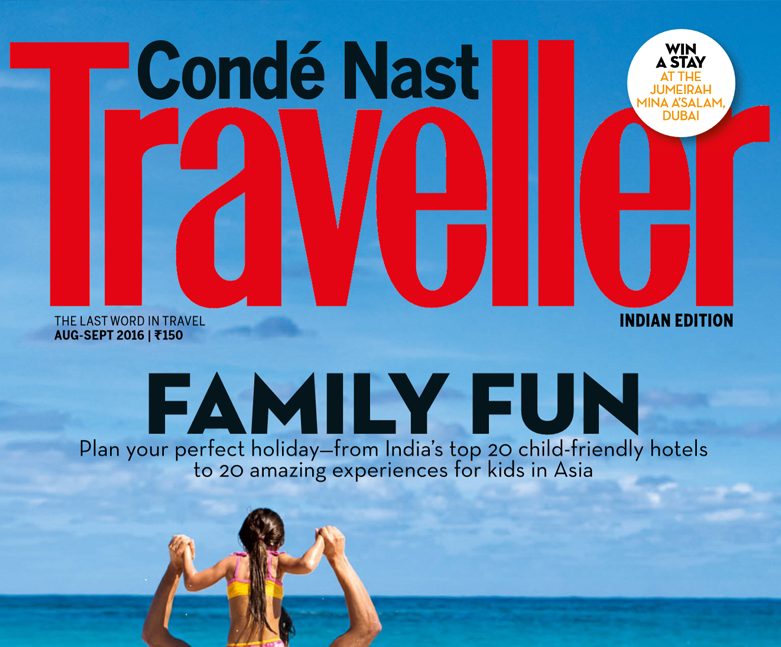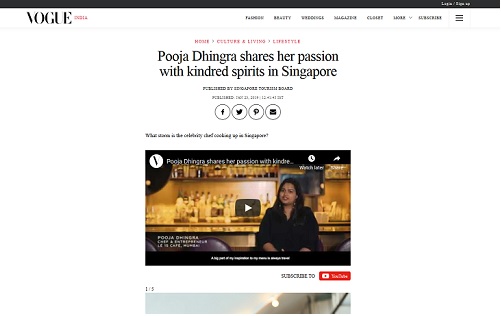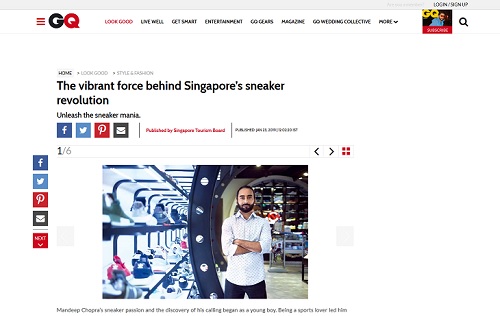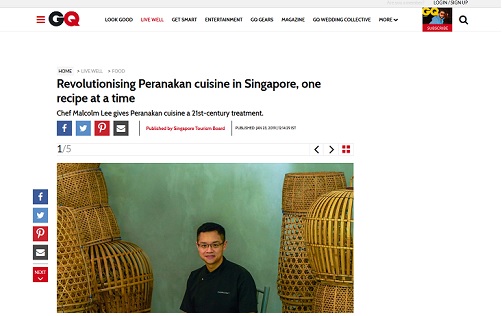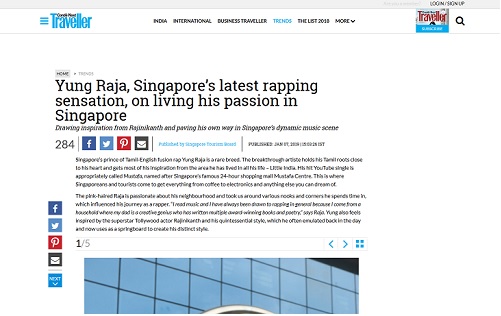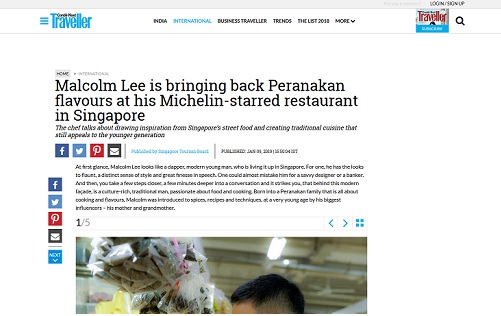Singapore grows up
Puja Disha Bharwani | TRAVEL IDEAS | September 22, 2011
Once known as one of Asia’s cleanest, most child-friendly, and least exciting cities, Singapore is now becoming a sexy, sophisticated destination
It’s 5pm on a Wednesday and the crowd at KU DÉ TA has just begun to gather. Settling under hot red beach umbrellas as cool breeze blows in off the bay, an international mix of finance professionals, creatives and techies comes out to play. KU DÉ TA, a new restaurant, bar and club perched 200 metres above Singapore’s newly-developed Marina Bay area, is tailor-made for such a crowd—and the perfect spot to witness the dramatic transformation taking place in the city below.
KU DÉ TA is part of Marina Bay Sands—a US$5.8 billion (26,045 crore), 55-storey complex that sent shock-waves through the city skyline when it took shape last year. Moshe Safdie’s three-tower design, with its boat-shaped Sands SkyPark roof garden, includes a 2,561-room hotel, a casino and 28 restaurants. Iconic American nightclubs Avalon and Pangaea are due to open by the end of this year.
This ambitious, über-modern project has come to symbolise a wider shift in the island city’s image. If you came to Singapore as little as two years ago, the shopping area of Orchard Road would probably have been where you spent most of your time; add on a night safari and the obligatory trip to the East Coast Seafood Centre for chilli crab on the beach and you’d pretty much ‘done’ Singapore.
Now the options are as diverse as one would expect of any world-class city: luxury bayside accommodation, cool, design-led boutiques and bars, Michelin-starred restaurants, exclusive clubs, upmarket casinos and—of course—more shopping than you can shake your platinum Amex at. These credentials are attracting a new breed of international visitors—both long- and short-term—who no longer travel here purely for work or for shopping, but who come simply to spend time in a grown-up, sophisticated city.
Raj Sriram, a senior private banker with Swiss Bank BSI, has lived in Singapore for 15 years. He has recently observed a new energy flowing through the city. “The lifestyle has changed dramatically,” says the 44-year-old. “There is a lot more vibrancy now, especially in cultural terms. It’s no longer about Indian or Asian culture, it’s about global culture.”
Singapore’s new mantra is spend it or store it—but do it in style. It helps that business is booming. According to the Singapore government, since 2002, the island’s annual per capita GDP has more than doubled to almost US$44,000
(19.76 lakh). Over US$1 trillion (45,00,000 crore) worth of assets are now managed here. An efficient legal system, superb banking infrastructure and very low tax rates have made it a haven for private banks, investment firms and hedge funds. As a result, bankers—and their high net-worth clients—are flocking to the Lion City, now home to the world’s highest concentration of millionaires. (Eduardo Saverin, the Facebook co-founder worth US$1.6 billion, or
7,156 crore, moved here in 2009.)
As one might expect, all this is having a marked effect on the city’s social landscape. Shabnam Melwani-Reis, 42, is director of fashion empire Jay Gee Melwani Group, and manages brands including Levi’s and Giuseppe Zanotti in Singapore. Petite and perfectly put together, Melwani-Reis has been a pivotal part of the party scene for years. But lately, she’s seen her Rolodex expanding in altogether unexpected ways. “We have seen a big influx of cosmopolitan people moving here,” she says. “It’s really opened up to be a fun city to live in. Singapore’s no longer just a city for families—now there are places for grown-ups to play too.”
One of Singapore’s sexiest playgrounds is Sentosa Cove, an enclave of palatial sea-facing mansions with their own private marinas and golf courses, where house prices start at around US$16.24 million (72.6 crore). Sentosa Cove is also the home of ONE°15 Marina Club, one of Asia’s most exclusive yachting hubs. Describing itself as a ‘playground by the sea’, it boasts luxury accommodation, a spa and an infinity pool overlooking the marina, where gleaming mega yachts of up to 200ft line the waters. Membership does not come easily, or cheaply—joining fees start at US$48,640 (21.75 lakh)—but insiders rave about the club’s resort-like atmosphere, where bikini-clad guests lounge by the pool all day.
Witness Singapore at its most glamorous during the Formula 1 Singtel Singapore Grand Prix in September. The event changes the face of the city, with the street circuit closing down main roads—while many more overflow with spectators. There’s a carnival atmosphere throughout F1 weekend, and at night the party scene is pulsating.
One spot that’s guaranteed to be buzzing during this year’s Grand Prix is Lantern bar, an exclusive poolside club at the new Fullerton Bay Hotel. Until recently, nightlife in Singapore didn’t get much better than a Singapore Sling at Raffles Hotel’s Long Bar. The Fullerton Bay has changed all that. Now the enchanting Lantern, with its private, members-only feel, is the city’s hottest after-hours destination. Gaze out at breathtaking views of the bay from one of its daybeds, a Wild Imperial Mojito in hand, and you’ll quickly see why.
The Fullerton Bay Hotel itself has also become something of a landmark since it opened in June 2010. Part of the Fullerton Heritage project on Marina Bay, its low-key glass façade sits on the waterfront between Customs House and Clifford Pier, the landing dock for the thousands of immigrants from India, China and beyond who came into Singapore in the 1930s. Inside, Hong Kong architect Andre Fu’s grand vision dazzles (think vast chandeliers and acres of polished marble). The 100 guest rooms have a cruise-ship vibe, with immense floor-to-ceiling windows and unobstructed views of the city skyline. Styling is elegant and masculine: leather Eames chairs and framed historical prints abound, while suites named after the island’s key ethnic groups (Malay, India, Colonial and Peranakan) give another nod to the area’s colonial history. The feel is sophisticated and thoroughly grown-up; something that’s emphasised up on the rooftop deck, where the 25-metre pool with open views of the bay has been designated a child-free zone.
After sundowners at The Fullerton Bay Hotel, head to ying yang rooftop bar at the club hotel on Ann Siang Hill, rin the trendier part of Singapore’s Chinatown. This 22-room boutique project started by Harry’s Hospitality is housed in a pristine white building in a street almost entirely made up of conserved shop houses. Taking the city’s colonial history and Chinatown’s heritage as inspiration, a minimal black-and-white checkered reception area is home to a sculpture of city founder Sir Stamford Raffles with his head literally in the clouds, representing the grand plans he had for the nation.
Ann Siang Hill, the area around the hotel, is dotted with interesting little shops, traditional spas and cafés, and is a great spot to spend a laidback afternoon. One of the area’s must-visits is PS.Cafe, where locals head for a lazy brunch or dessert and drinks. This refurbished three-storey shop-house is decorated in colonial French style, with embossed ceilings and giant tropical plants. Its bar, lounge and restaurant have some unique culinary experiences on offer (try the black sesame martini with coconut flakes, the truffle fries and the laksa leaf pesto pasta). The fourth PS.Cafe in Singapore, this branch is the only one that does not allow children. The sign on the door saying ‘adults and teenagers only’ raised a few eyebrows when it first appeared in this child-friendly city, but you won’t find its young, fashionable crowd complaining.
When it comes to food, Singapore has always punched well above its weight. But it’s no longer just the street food scene that has critics raving: in the last year or two the fine dining scene has exploded, racing to meet the tastes and expectations of a cosmopolitan market. Dan Segall, the chef behind KU DÉ TA’s modern Asian menu, said he was drawn to Singapore because of the way the food industry has matured. Dressed in ripped jeans and a white chef’s shirt as he prepares his signature sticky sweet calamari, he said, “I found a lot of good places, good quality food, people trying, not just opening up a place for the sake of it. People are putting in a lot of thought, effort and style—and it shows.”
In addition to KU DÉ TA, the Marina Bay Sands complex is home to a belt- (and wallet-) busting array of eating opportunities. Highlights include CUT, Wolfgang Puck’s signature steakhouse, Guy Savoy for haute cuisine in a grand setting, and Australian chef Tetsuya Wakuda’s Waku Ghin, which features a sake bar and caviar lounge.
According to renowned food critic KF Seetoh, it all points to the fact that Singapore’s food scene has come of age. He describes a dish of slow-roasted pigeon with foie gras and truffle sauce prepared by veteran Singaporean chef Sebastian Ng at Ember restaurant in Chinatown—a far cry from the traditional Chinese favourites on offer a few years ago. “It’s crazy, wild, unpredictable and very exciting,” says Seetoh. “Many top chefs are setting up shop in Singapore because it is seen as a food capital not just of fine and progressive dining, but of heritage street food of the region too.”
Though not known for its art and culture, in this respect too, the city is catching up. Ketna Patel, an ebullient African-born Indian artist says, “It’s a transparent society where you have access to all sorts of people from different cultures; in that respect, it’s a lot like India.” Patel has strong opinions about what she sees around her, much of which is reflected in her work. For a unique art piece, pay a visit to her boho-chic gallery in the suburban enclave of Chip Bee Gardens, Holland Village, where her ‘Asia POP’ collection of prints and home accessories uses collage photography to convey a message about contemporary Asian society.
Singapore’s ethnic areas are undergoing exciting transformations, too. An area near Chinatown once known for its brothels is now attracting offices of investment firms and lawyers. And tucked in the heart of Little India is Loh Lik Peng’s new wanderlust hotel, a mishmash of French architecture, modern furniture and funky neon lighting.
But Singapore’s cultural mix comes to life on Haji Lane, an area that has recently become a destination for niche, independent fashion labels. This narrow strip of heritage shop-houses is one of the most colourful streets in the Kampong Glam district. Pick up a piece at local jewellery designer Hadassah Lau’ store Hadasity—a fitting memento of the new, sexy Singapore.
In its fashion, in its art, its food and its nightlife, Singapore feels like a city that has come of age. Embracing colonial history, a diverse cultural mix and its modern incarnation as an international business capital, it has found a new sense of confidence and sophistication. Now the Lion City is not only roaring; it’s finally learning to let its hair down.[/fusion_text]

